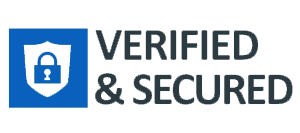So, you’re a restaurant owner who needs some new gear to take your business to the next level. With the high costs of ovens, refrigerators, and other appliances, most business owners find it difficult to pay for everything upfront. That’s where restaurant equipment financing comes into play. This type of financing is a godsend for many business owners, but understanding the options and nuances can be daunting. From dealing with bad credit to navigating broken invoicing systems, this guide is designed to help you find your way through the complex world of restaurant equipment loans, unsecured lines of credit, and other financing solutions.
Assessing Your Needs: The First Step in Equipment Financing
Before diving into the financing pool, make sure you have a list of the specific equipment you need and the amount you aim to borrow. Knowing this upfront will make it easier for you to identify the type of financing that’s right for your restaurant. In essence, it’s like getting a business line of credit but exclusively for equipment. With an array of options ranging from traditional small business loans to more specific equipment financing loans, this step can make your decision-making process smoother.
Interest Rates: The Number Game
Interest rates are a critical factor to consider in any financing deal. These rates for equipment financing can vary widely, from as low as 4% to as high as 30%. The rates can even be more discouraging for those with bad credit. The key here is to compare rates from multiple lenders, whether they are traditional banks, credit unions, or online lenders. Do your due diligence to secure the best deal possible for your restaurant.
Repayment Terms: The Long and Short of It
Another crucial aspect to consider is the repayment terms. Typically, these are calculated based on the usable life of the equipment you’re financing. Short-term business loans can have terms ranging from three to five years, while some U.S. Small Business Administration (SBA) loans may offer longer terms. It’s essential to find a balance that allows you to manage monthly payments without burdening you with a high interest over time.
Deciphering the Total Costs
While focusing on interest rates and repayment terms is essential, don’t forget to look into other fees such as origination fees and prepayment penalties. Understanding these hidden costs can help you accurately compare the total costs of borrowing between various lenders.
Unsecured Loans and Lines of Credit: Flexibility with Risks
If you’re not keen on putting your new equipment up as collateral, you might consider unsecured lines of credit. This form of financing is flexible and allows you to draw funds as you need them. However, these usually come with shorter repayment terms, and if you’re a business owner with bad credit, they might not be the best fit.
A Multitude of Uses: From Appliances to Decor
Restaurant equipment financing isn’t just for ovens and freezers. You can also use these loans to finance other needs, such as furniture, fixtures, and even décor. This flexibility makes it a valuable tool for business owners looking to revamp their restaurants or expand their services.
Factoring Your Options
For those who are new to the business or struggling with bad credit, factoring could be an alternative solution. Although this option involves selling your receivables at a discount, it can provide immediate cash flow to finance your equipment needs.
Big Tech and Financing: A New Horizon
With big tech companies like Apple and Google venturing into financial services, new options for small companies may emerge. However, tread cautiously. While these options might offer convenience, they come with their own set of risks and considerations.
Conclusion
Navigating the restaurant equipment financing landscape can be challenging, but it’s essential for growth and operational excellence. Whether you opt for a traditional small business loan, an equipment financing loan, or an unsecured line of credit depends on various factors such as your credit score, business history, and financial needs. Be meticulous in your research, and don’t let bad credit or broken invoicing systems deter you from making an informed decision.


